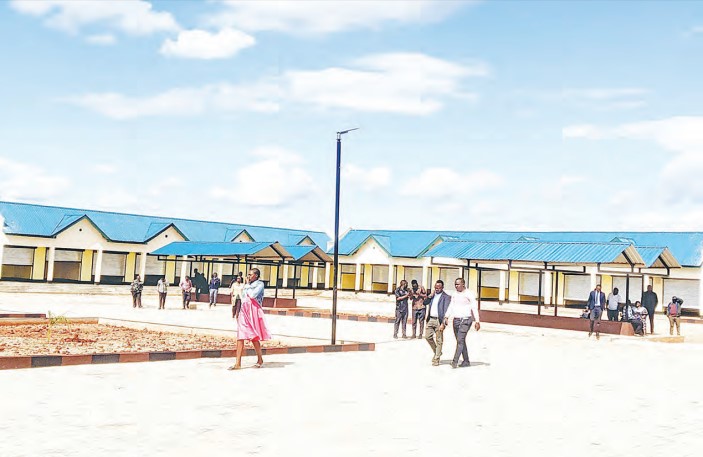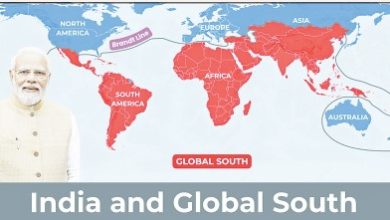Peramiho’s new terminal cuts cost, adds comfort

RUVUMA: FINALLY, residents of Peramiho woke up on July 1, 2025 to find their dusty, chaotic bus hub transformed.
Instead of pothole galas and impromptu vegetable markets, they now have a sleek, modern bus stand formally opened by Brigadier Ahmed Abbas Ahmed, the Ruvuma Regional Commissioner.
The structure, built at a cost of over 600m/-, emerged thanks to Tanzania Social Action Fund (TASAF) Phase III cash and a friendly brainstorming session with Lundusi Village residents.
In his inauguration speech, the Regional Commissioner showered praise on TASAF officials for their partnership and teamwork with the local community.
Equally, he praised current Health Minister Jenista Mhagama, whose lobbying with the Songea District Council secured the handson support needed to finish the job.
A shout-out also went to President Dr Samia Suluhu Hassan, credited for channeling funds to Ruvuma’s development projects.
This is more than infrastructure, it is an economic engine. Songea District Council’s Executive Director, Elizabeth Gumbo (represented by TASAF Coordinator Hosana Ngunge), said the construction created local, temporary jobs for Lundusi folks.
She expressed gratitude to the government and emphasised how the project aligns with broader development goals. The RC was not just there for ribbon-cutting.
Carefully walking around the site, he reminded officials and locals of their shared responsibility: “Look after it, because his stand is yours!” In the course, he ordered District Commissioner Kapenjama Ndile and Gumbo to establish reliable water infrastructure.
The site is now equipped with bathrooms, shops, a parking lot, fence, manager’s office, everything except maybe a mini-fridge stocking canned sodas for impatient passengers.
Taking to the podium, TASAF Managing Director Shadrack Mziray stepped up to the mic. With pride and a hint of self-awareness, he lauded President Samia’s anti-poverty push through TASAF.
Since its founding in 2000, TASAF has handed out more than 1tri/- in grants, lifting rural families toward improved agri-business, education and small-scale commerce.
Mziray promised that the Peramiho project would wrap up by September 30 and all pending beneficiary payments would land before then.
He’s already planning TASAF’s next phase, set to begin in October.
He credited the Lundusi community for designing the project themselves, which includes five key elements namely a cluster of shops, a stand manager’s office, paved (block) walkways, a secure perimeter fence and a proper parking area.
The local impact was clear: People travelling from St Joseph’s Hospital to Lundusi Village currently pay 1,500/- to 2,000/- via bodaboda (motorcycle taxi).
With the new bus stand, minibus fares from Songea to Peramiho hover at 1,200/-.
Residents widely agree that the stand simplifies travel and lets them keep more cash in their pockets.
“It’s like a subsidy realised,” one local said, though with proper gratitude to TASAF and the government and especially Minister Mhagama, whose push through gave the project wings.
The project isn’t just good news for passengers; it is a win for minibus drivers and conductors. Selemani Iddi Ally, chair of the Ruvuma Regional Minibus Drivers & Conductors’ Union, greeted Commissioner Ahmed with both thanks and a gentle demand.
He appealed for help from Tanzania Rural and Urban Roads Agency (TARURA) or Tanzania National Roads Agency (TANROADS) to widen the straight-from-nowhere road between Peramiho and the stand and to add traffic signs.
ALSO READ: State to build modern bus terminals nationwide
He affirmed drivers would maintain and safely utilise the new stand, just as requested.
District Commissioner Kapenjama Ndile reminded attendees that the council has started earning revenue from land allocation, thanks to ongoing construction.
What used to be a vacant plot is now a multi-use facility that will benefit locals, hospital visitors and government employees whose offices are close by.
He took the opportunity to ask TASAF to replicate this model at the Tanzania– Mozambique border.
Many travellers pass through Peramiho, why not equip them with the same comfort and convenience? With a friendly nod, he highlighted that development doesn’t stop with a ribbon; it should expand outward, road-by-road.
What Peramiho really got In a nutshell, Peramiho’s bus stand is no longer a glorified patch of mud.
It’s a transport hub: Organised and affordable; Job creator: For local community members; Economic anchor: With small businesses in shops; Community asset: With water, sanitation and fenced safety.
Residents are already feeling the benefits: Cheaper travel, better access to the hospital and the promise of local employment.
The stand is now a family-friendly crossroads that offers convenience and small commercial opportunities.
Let us be honest, in most places a bus stand is about as glamorous as office cleaning.
But in Peramiho, it’s practically a five-star terminal. Maybe soon someone will propose adding charging ports for phones, or a coffee vendor selling cappuccinos to queuing passengers. You know, for VIP vibes.
At least one boda-boda rider was quoted: “Now I can swap my mud splashes for a five-minute rest by the shops, instead of dodging potholes!” Sounds like the kind of statement that deserves a cappuccino—or at least a cold soda.
The real success story here is not the shiny concrete or paint job.
It’s the local input. From digging foundations to real design elements, Lundusi villagers participated in every stage. This isn’t a top-down project, it is a community-owned win.
Come October, TASAF goes national with its next stage of development, but Peramiho now has proof that when local people shape the project, it gets finished, used and loved.
That’s a model worth replicating, even at the border crossing.





